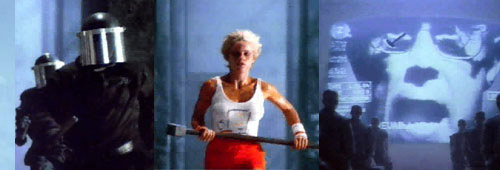The Interpretation of Advertisements
ADText: Advertising Curriculum
Unit 9: The Interpretation of Advertisements

If the meaning of images and texts were simply transparent, there would be little reason to ask: What does this mean? Instead, we struggle to understand ancient inscriptions, sacred texts, modern novels, films, and even statements made in conversation. Also perplexing are visual images: Neolithic cave paintings, frescoes from the Italian Renaissance, children’s drawings, art from other cultures, and the latest television commercials. This unit discusses interpretive strategies used to understand works of “art” and examines how these interpretive strategies can also be used to understand the meaning of advertisements. Although primary attention is given here to visual images, many of these strategies apply as well to written texts.
1. Cave Painting from Lascaux, France
The caves in Lascaux, France, are among the most famous in the world. They were discovered (or perhaps, more accurately, “rediscovered”) in 1940 by children playing nearby. Their walls contain elaborate paintings made perhaps as much as 30,000 years ago. These paintings have fascinated the public as well as historians of art for over a century, and there have been many efforts to decipher their meanings.
Two common ways to discover the meanings of images are unavailable in the case of the Lascaux cave paintings: asking the artists what they intended, and examining the general uses of art in the society. These unknown artists died long ago; thus, they cannot be asked what they had in mind when sketching animals on cave walls. The society that produced the art has also passed out of existence. We can only imagine the society’s ideas about expressive representations. These facts make the interpretation of the Lascaux cave paintings especially difficult.
These problems have not, however, halted efforts to determine the meaning of the art in the Lascaux caves. Art historians and archaeologists have speculated about the meaning and significance of the images. Although their explanations typically lack supporting evidence, they are frequently accepted as accurate and passed as true.






